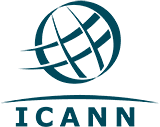Distribution channels on the web
Website: Blogs: Publishing relevant articles and news. Product/Service Pages: Detailed information about what you offer. SEO: Search engine optimization to improve organic visibility. Social Media: Facebook, Instagram, Twitter, LinkedIn: Key platforms for sharing content and connecting with your audience. YouTube: Ideal for video distribution. TikTok: Increasingly popular for short and viral video content. Email Marketing: Newsletters: Sending regular updates to a subscriber list. Email Campaigns: Promotions, product launches, important news. Online Advertising: Google Ads: Search and display advertising. Social Media Ads: Facebook Ads, Instagram Ads, LinkedIn Ads, etc. Native Advertising: Sponsored content on platforms like Outbrain or Taboola. Marketplaces and E-commerce Platforms: Amazon, eBay: For physical products. Etsy, Shopify: Specialized online stores. Collaborations and Influencer Marketing: Influencers: Working with influential people to promote your products or services. Brand Collaborations: Partnering with other brands for joint campaigns. Online Forums and Communities: Reddit, Quora: Participating in relevant discussions and sharing your expertise. Facebook Groups, Discord: Specific communities where you can interact directly with your audience. Podcasts and Webinars: Podcasts: Creating or sponsoring podcasts related to your industry. Webinars: Online seminars to educate your audience and generate leads. SEO and Organic Content: SEO-optimized Content: Improving search engine rankings. Content Marketing: Creating valuable and relevant content to attract and retain your audience. Mobile Apps: Apps: If you have an app, using it as a distribution channel for notifications and exclusive content. Each of these channels has its own advantages and can be used in combination to create an effective and cohesive distribution strategy.
Read More









